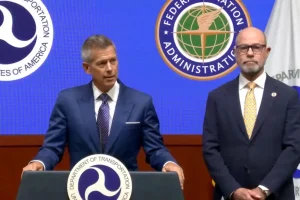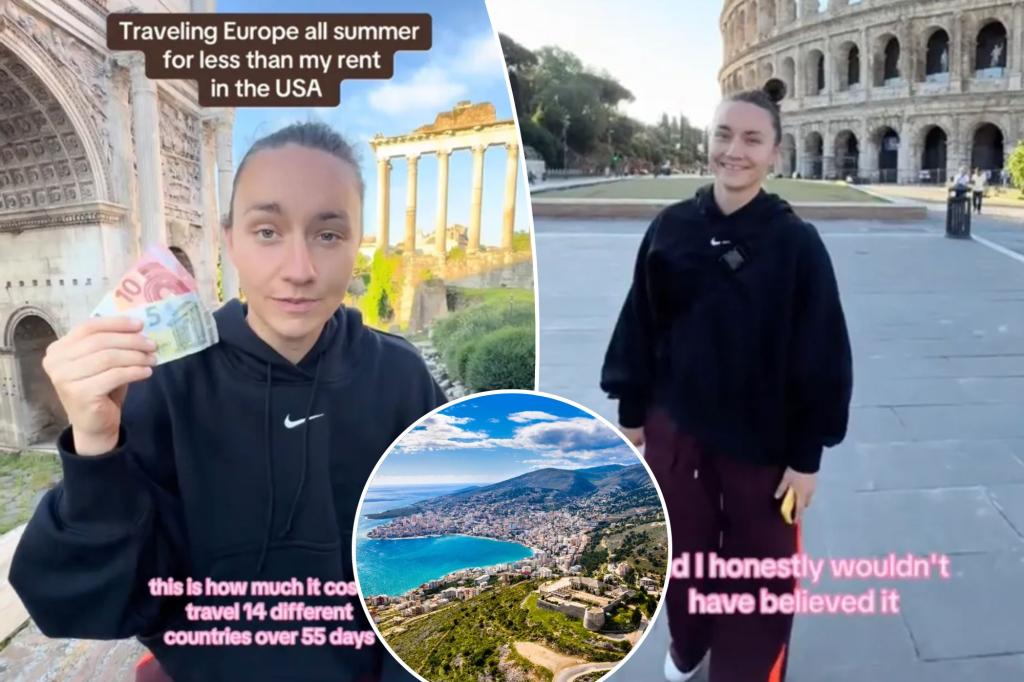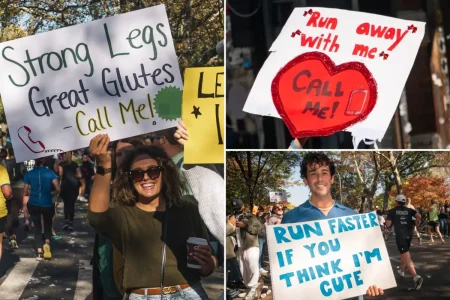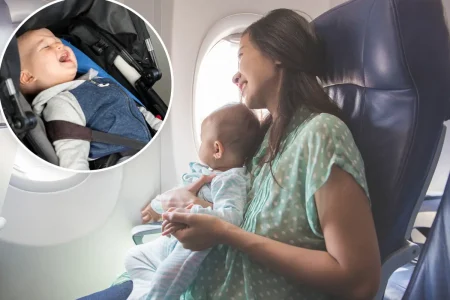Summer in Europe: A Financial Revelation for American Travelers
In a surprising financial revelation, an American woman’s European summer adventure has challenged the notion that international travel is a luxury reserved for the wealthy. Monae Hendrickson, a 29-year-old content creator from Los Angeles, documented her 55-day journey across 14 European countries, demonstrating that extended international travel can actually be more affordable than daily life in major American cities. Her viral TikTok video highlighted a startling economic reality: she spent a total of $4,170 on her two-month adventure, averaging just $76 per day—significantly less than her $86 daily rent in Los Angeles. This economic disparity points to a shifting paradigm where, in some cases, traveling abroad isn’t merely an indulgence but potentially a financial strategy. “The United States is no longer economical,” Hendrickson told The Post, emphasizing that living costs in major U.S. cities often exceed the expenses of exploring various parts of the world.
Hendrickson’s budget-conscious approach centered around strategic destination choices, with a significant portion of her journey taking place in Eastern European countries where costs are notably lower than Western Europe or major U.S. cities. Despite her frugality, she didn’t sacrifice comfort or experiences during her travels. In countries like Poland, Latvia, and Albania, she enjoyed quality accommodations through Airbnb, sampled delicious local cuisine, and even discovered what she described as “the best ice cream she has ever had in her entire life.” The economic advantages were striking: “An average cappuccino in Albania was $2,” she shared, “while a private room in a hotel was an average of $30 per night.” These figures represent substantial savings compared to similar expenses in American metropolitan areas, where a specialty coffee alone can cost $5-7 and decent hotel accommodations rarely fall below $100 per night.
The latter portion of Hendrickson’s European adventure took her to the traditionally more expensive Nordic countries, including Finland. While these destinations have a reputation for high costs, Hendrickson found that the overall financial impact was manageable because of the savings accumulated during her time in Eastern Europe. Even in these pricier locations, she observed that the value proposition often exceeded what America offers. “Dollar for dollar, it’s pretty close to the US,” Hendrickson explained, “but you get safe public transportation, beautiful, publicly funded, affordable activities, astonishing nature, and truly, don’t get me started on the cardamom buns.” This perspective highlights an important consideration for potential travelers—the comparison isn’t just about raw numbers but about the quality of experiences and amenities received for the money spent.
Beyond the financial advantages, Hendrickson’s European journey offered her a profound shift in perspective regarding quality of life. Her experiences abroad led her to a striking conclusion about American living standards: “You can never go back to pretending that life in America is the best it gets.” This sentiment reflects a growing awareness among American travelers who, upon experiencing different societal structures and priorities in European countries, begin questioning aspects of American culture they previously took for granted. From efficient public transportation networks to accessible healthcare, affordable education, and stronger work-life balance cultures, many European countries offer amenities and social systems that stand in stark contrast to the American experience. Hendrickson’s observation speaks to a broader phenomenon where international travel becomes not just a vacation but an eye-opening education about alternative ways of structuring society.
Hendrickson’s story resonates particularly with younger Americans facing economic challenges in their home country. Like many college graduates of her generation, she described feeling “burned out by America’s corporate culture” despite holding two business degrees. Her experience reflects a common frustration among educated millennials and Gen Z professionals who find themselves “overqualified for dead-end jobs” while struggling with high costs of living in American cities. This economic pressure, combined with growing awareness of different lifestyle possibilities abroad, has contributed to a rising trend of young Americans seeking alternative paths—whether through remote work, digital nomadism, or career changes that prioritize flexibility and fulfillment over traditional corporate advancement.
The transformation of travel from luxury expense to potential cost-saving measure represents a significant shift in how Americans might approach both personal finances and life planning. For Hendrickson, what began as an adventure evolved into a career transition; she now works as a full-time travel content creator, embracing “the freedom, flexibility—and the financial savings—that overseas travel awards her.” Her story suggests a provocative possibility for others facing economic pressure in expensive American cities: perhaps the conventional wisdom of “settling down” in one location needs reconsideration in a globalized world where geographic flexibility might offer both financial advantages and quality-of-life improvements. While extended international travel isn’t feasible for everyone, Hendrickson’s experience demonstrates that for some, particularly those working remotely or in location-independent fields, the economics of mobility might be worth serious consideration. As urban living costs continue rising in major American cities, more citizens may find themselves contemplating similar alternative approaches to work, life, and financial planning that include significant time abroad.















